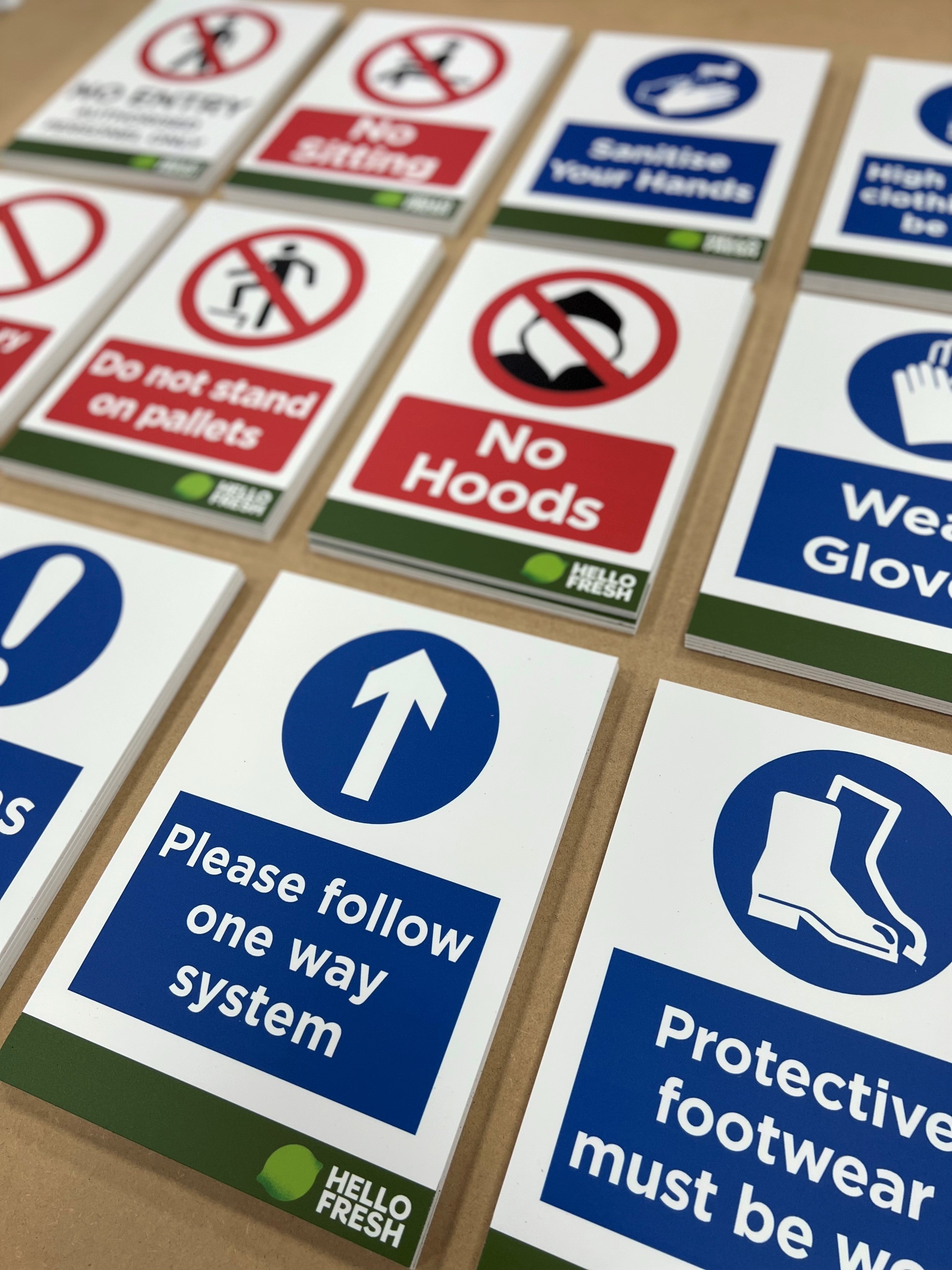FREE delivery on orders £50+ | Large volume discounts | Custom printed signs available
Viewing Distances
On construction and demolition sites, health and safety signage is critical to ensuring the well-being of workers and visitors. Proper signage helps prevent accidents, guide people to safety in emergencies, and communicate important safety information. To be effective, these signs must be visible and legible from appropriate distances, especially in dynamic, high-risk environments like construction sites.
Legal Requirements for Safety Signage on Construction Sites
Health and safety signage on construction and demolition sites must comply with UK regulations, which ensure safety risks are clearly communicated.
The key regulations include:
-
The Health and Safety (Safety Signs and Signals) Regulations 1996, which mandates the use of safety signs where hazards cannot be eliminated.
- The Construction (Design and Management) Regulations 2015 (CDM), which require safety signage to be in place to warn of risks and direct workers to safe practices.
- The Regulatory Reform (Fire Safety) Order 2005, which covers fire safety signage, including the positioning and visibility of fire exit signs.
In addition, safety signs must comply with BS EN ISO 7010:2019 standards, which ensure consistency in design, colours, and symbols across all types of health and safety signage.
Viewing Distance and Its Importance on Construction Sites
Construction and demolition sites are often large, complex environments with heavy machinery, high-risk zones, and multiple access points. Clear signage is vital to ensure workers can identify hazards, locate safe routes, and access emergency exits quickly.
Viewing distance refers to how far a sign can be seen and understood by workers or visitors. It’s influenced by the size of the sign, the clarity of its design, and the environmental conditions on-site (e.g., dust, weather, lighting).
Key Factors That Affect Viewing Distance:
Sign size – Larger signs are more visible from greater distances.
Lighting and visibility – Good illumination (natural or artificial) is crucial for maintaining sign visibility, especially in low-light conditions such as early mornings or during night work.
Font size and symbol clarity – Clear, simple fonts and high-contrast colours improve legibility, even in challenging conditions.
Mounting height and placement – Signs should be placed at eye level or above, avoiding obstructions like scaffolding, vehicles, or equipment.
Proper safety signage is vital on construction and demolition sites, where the environment is dynamic and constantly changing. Ensuring that signs are the correct size for their environment and legible from the appropriate distance is essential for maintaining safety and complying with UK regulations.
Below is a rough guide to view distances
| Sign Size (mm) | Max Viewing Distance (meters) |
|---|---|
| 150 x 200 mm | 6 meters |
| 300 x 400 mm | 12 meters |
| 450 x 600 mm | 18 meters |
| 600 x 800 mm | 25 meters |
Please speak to your site health & safety officer regarding sign mounting heights and signage sizes required for viewing on all sites.
Key Points:
- Always follow legal standards like The Health and Safety (Safety Signs and Signals) Regulations 1996, CDM Regulations 2015, and BS 5499-4:2013 for fire safety signage.
- Use signs that are large enough to be visible from the maximum required distance, based on the size and complexity of the site.
Please speak to your site safety manager or industry advisor to ensure current legislation, regulations and health and safety guidelines are adhered to.
Please note we custom print our signage so we can make signs as small or large as you need, please contact our team on 01347 823230 for custom sizes.

